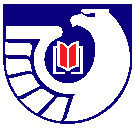 |  |
 |  |
VI - Collection Maintenance
1 - Shelf reading:
Shelf reading is the process of checking material on the shelf to ensure that it is in the proper call number sequence. Shelf reading is necessary because, despite our best efforts, some errors do occur in shelving; and also because in some cases patrons use material and then return it to the shelf - in the wrong place. After shelving, shelf reading is our highest priority. Shelf reading assignments will be made to individual students on a case by case basis. If you know of an area in need of particular attention, let the documents librarian know so it can be shelf read as soon as possible.When self reading, it is necessary to check all documents in turn to make sure they occupy the correct place in the sudoc sequence. Be sure to check the document to the left and the document to the right and the call number on the Princeton file where applicable. Documents should be on the shelf or in a Princeton file in sudoc number order from left to right.
When adjusting material in a Princeton file, make sure the label on the front of the file accurately represents the contents of the file. If it doesn’t, make a new label. If material in a Princeton file is becoming crowded, simply find a new file and make a label for it. Then shift some documents into the new file.
While shelf reading, you may find multiple copies of a document, documents which should have been superseded, more than one document with the same sudoc number, a document with no sudoc number or any number of other anomalies. If you find anything strange, please give the documents in question to the documents librarian right away. Don’t ever discard a document or change the call number on a document without first checking with the documents librarian.
After you have completed your shelf reading assignment, make sure all documents are neatly arranged on the shelf. Record the last call number of the area you were shelf reading and call it a day.
Make sure you alternate shelf reading with another activity and don’t spend more than 1 hour at a time shelf reading - fatigue and boredom set in quickly.
2 - Shifting:
Occasionally it becomes necessary to do some rearranging of the collection. This most often happens when shelves become over crowded and there isn’t room to shelve new documents coming in. Don’t ever force a publication on to the shelf since this can damage the binding of the document. If a shelf is too over crowded to accommodate any more documents, notify the documents librarian at once. He or she will work up a plan to alleviate the tension.
3 - Revisions and Corrections:
Some publications are revised on a regular (or not so regular) basis. In the case of an entire document being revised, we discard the superseded version and keep the new one. When you are shelving and you see a note on a document saying to “Discard if Revised”, pull the old publication off the shelf and shelve the new one in it’s place. In other cases, a document is received and maintained in a loose-leaf notebook and we receive updates or “transmittals” which only replace certain pages of the document. Each transmittal contains instructions telling you which pages to remove, replace, etc. Set aside all documents which have been superseded or revised for review by the documents librarian. Again, never throw anything away without checking with the documents librarian first.
4 - Security Stripping:
As promised, here is more information on security stripping. It is vitally important that you do not share this information with anyone who does not work at the library. The system of security stripping books and documents is how we protect our collection from theft. If I find out you’ve told, it could be grounds for dismissal. That said, let me explain what these strips are and how they work. Each strip is a thin piece of metal which holds a magnetic field. When an item is checked out, the folks at Circulation deactivate this field and the item does not set off the gate alarm. If this field isn’t deactivated, the gate alarm will sound. In government documents, we put a security strip in all documents of more than 25 pages. After a document is stripped, put a small check mark in pencil beside the call number. We do not strip documents going to serials, techprocesses or reference with the exception of the CFR which is stripped before being shelved in reference. Before you are asked to actually insert strips into documents you will be given a hands on demonstration.
5 - Corrections :
Corrections are changes mainly in class numbers which are issued bimonthly by the Government Printing Office in their publication Administrative Notes. The Admin Notes lists the class number, item number, shipping list number, title and the change to be made to each document in the section on Classification/Cataloging Update. When you are asked to do corrections, go through the list and indicate which documents we should have received by checking the item number against our list of items selected. For those items we have received, go to the shelf and pull the item. Then change the class number to reflect the change in Admin Notes. Also change the shelf list. If the item is not on the shelf, or if for any reason you are unable to make the change that GPO wants mad, indicate that on the list in Admin Notes. When you have finished a list, give the whole thing to the documents librarian who will then make the necessary changes in the GENIE online catalog and on the shipping list if we still have it in our files.
Table of Contents
Next Section
Previous Section